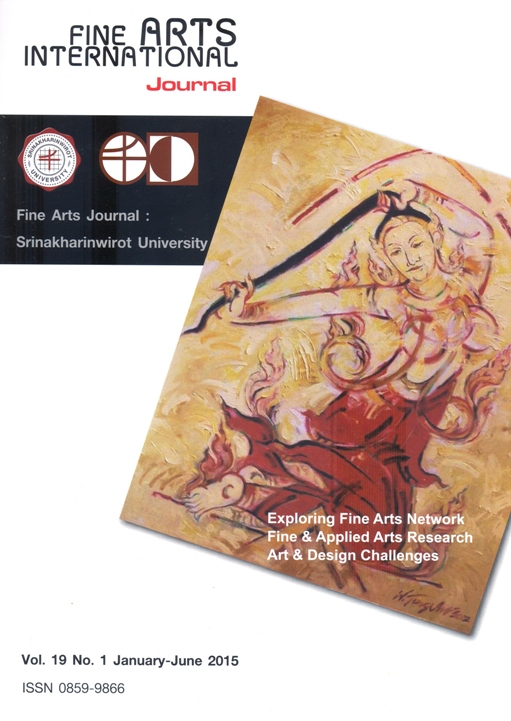Video Art: The Intertextuality andInterpretation of Bangkok Society from theMemories and Perspective of a Chinese-Thai
Keywords:
intertextuality, video art, contemporary art, Chinese-ThaiAbstract
This creative research has been constructed using The Theory of Intertextuality and the context related to the process of creating artwork, inspired by a Chinese-Thai family member. The study covers the historical events in Bangkok during the years between 1957 and 1974, which was a period of immense social, economic and political change.
It is also the same period which the researcher’s mother grew up in and experienced the social conditions of the capital through, what was at the time, entertainment culture such as film, theater, radio soap opera, and Thai music etc, via channels of communication technology and artworks such as the theater, cinema, television, radio and posters etc. At the same time, she was affected by social changes both in respect of status and the identity of the Chinese ethnic group living in Thailand when the government was promoting the concept of Thainess, and in recognition of gender as a female being treated unjustly.
The Researcher has used the procedure under the theory of Intertextuality to interpret the social context, songs and things associated with the his mother’s memory to create the work of video art as a medium that can combine both visual and sound contents in compliance with the artistic theories and concepts by means of selective interpretation and past performance to new creative fields(Appropriation Theory) in order to allow the audience to recall memories of society in the past (Social Memory), which affects the presentation of the research.
The presentation will be conducted in a way that the content is being told in respect of social events, by choosing to use the principles of overt and covert signs which are the highest and lowest points during the life of his mother, based on the interview as a factor in the production of video art. The researcher chose to use the local residents and the environment within the SoiCharoennakorn 13 community, which is the current residence of his mother as the operational field for his creative research.






